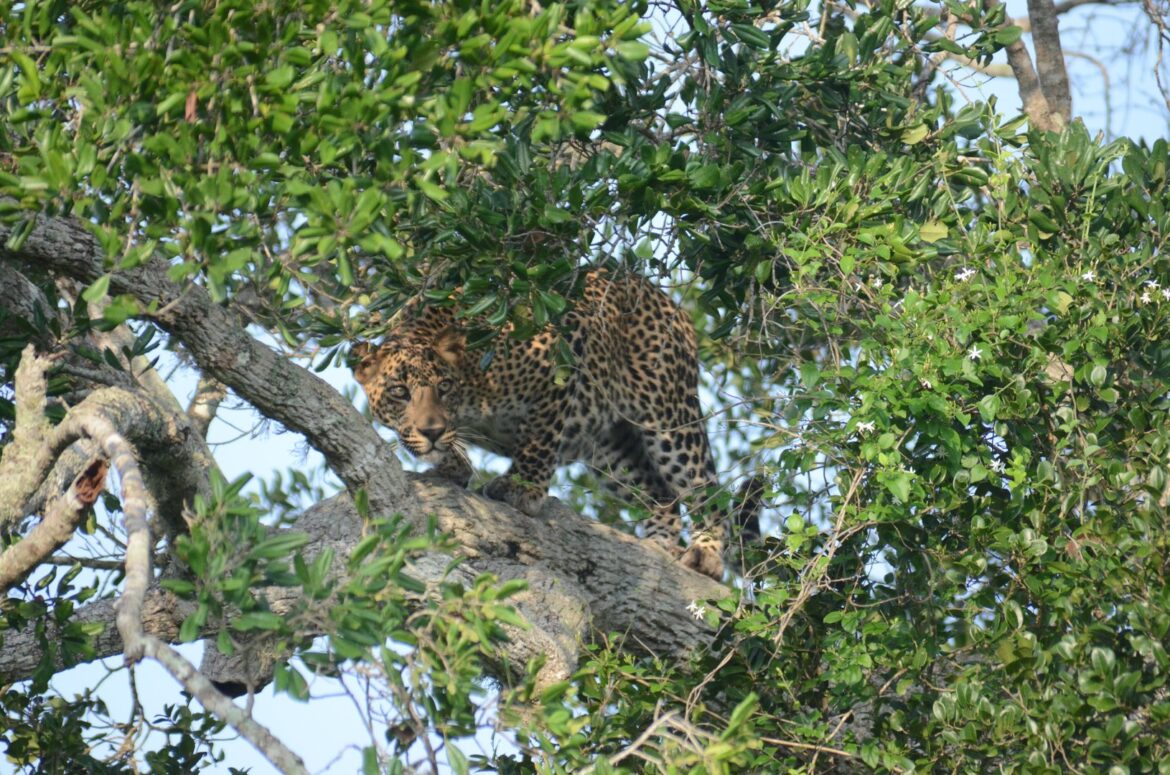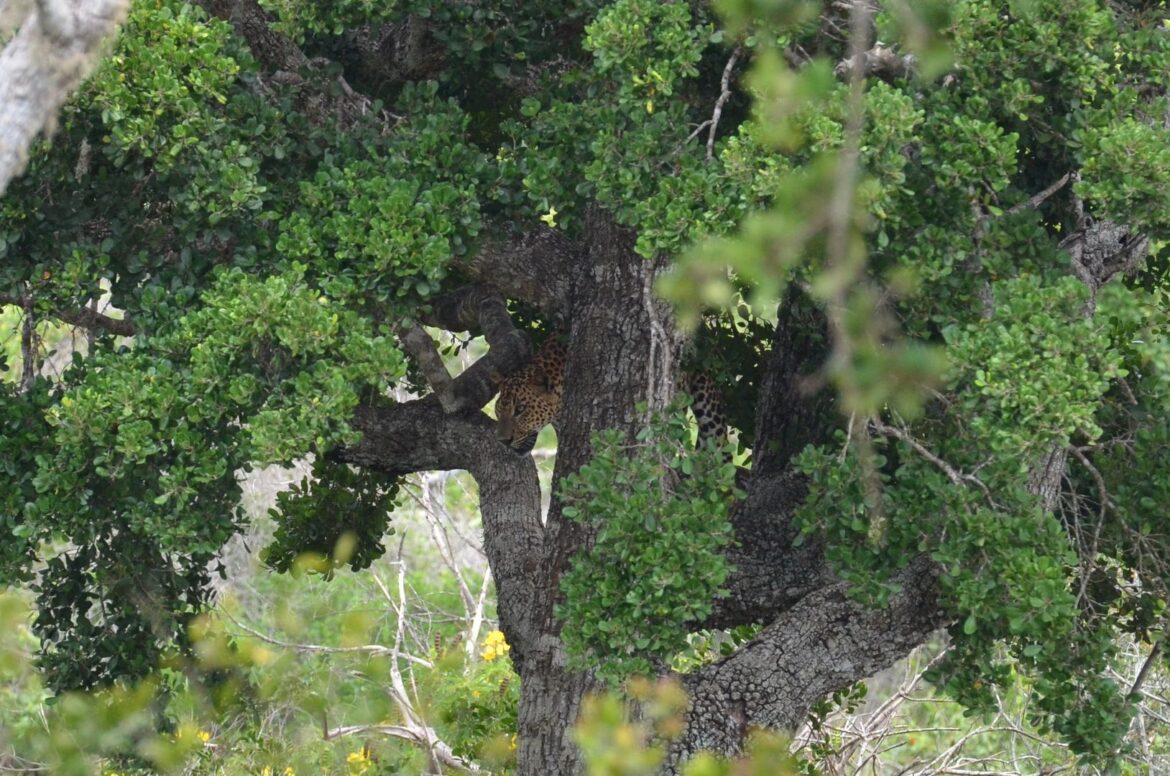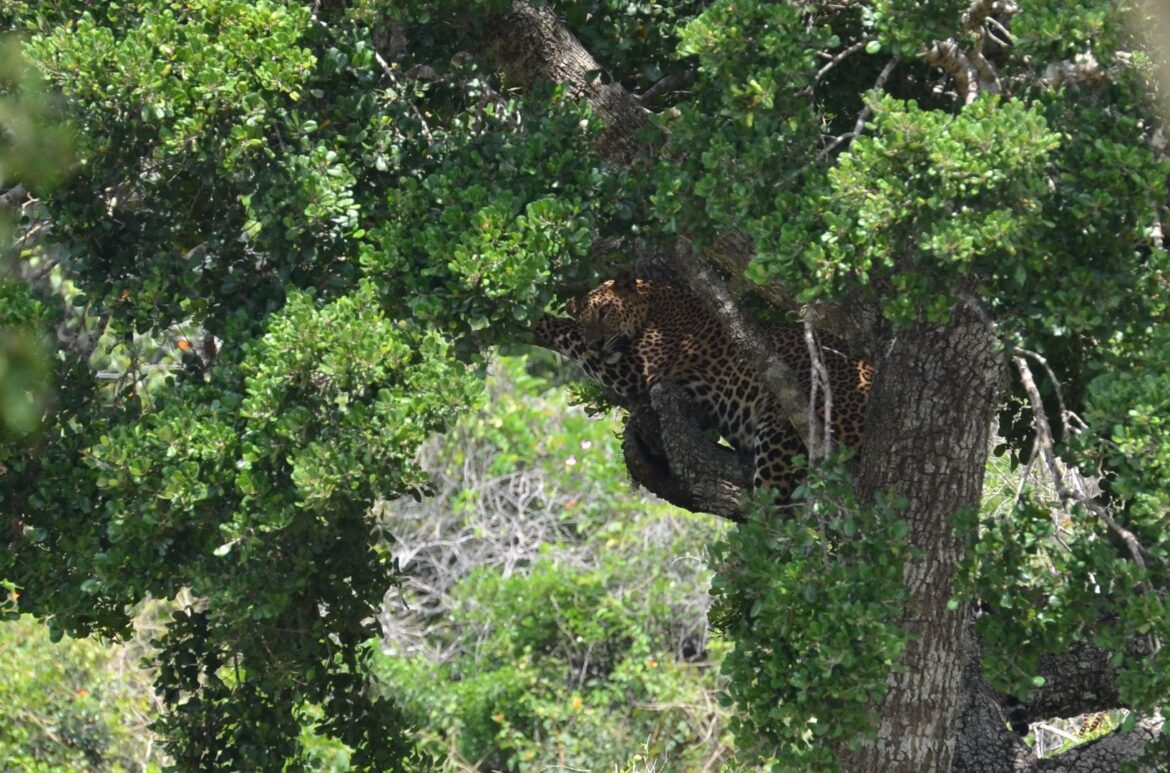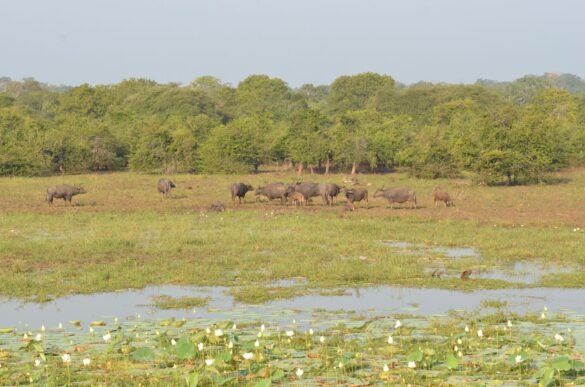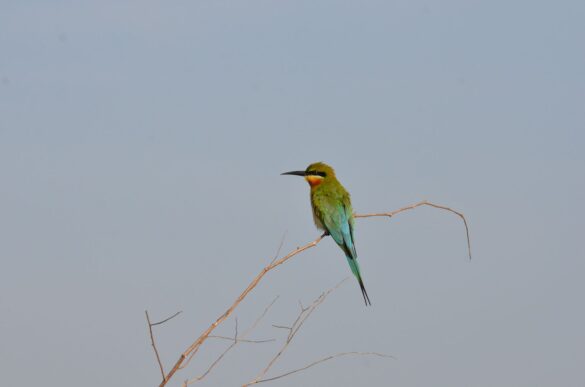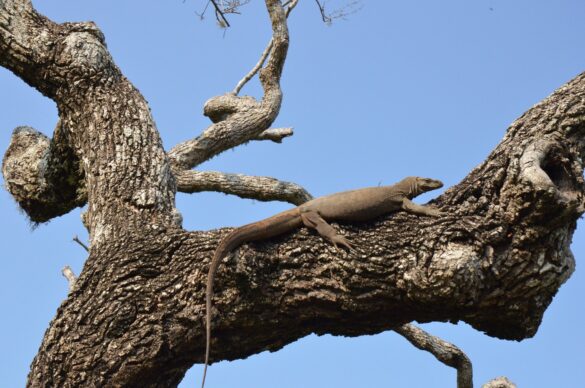Yala National Park (Yala Safari)
Yala National Park (also known as Ruhunu National Park) is the most visited and second largest national park in Sri Lanka. Ideal for wild life jeep safari.
Yala National Park is well recognized as one of the best park in the world to observe leopards. Yala National Park has a variety of ecosystems including moist monsoon forests, dry monsoon forests, semi deciduous forests, thorn forests, grasslands, fresh water and marine wetlands, and sandy beaches.
Yala National Park (also known as Ruhunu National Park) is the most visited safary destination and second largest national park in Sri Lanka. Actually it consists of five blocks, two of which are now open to the public; and also adjoining parks. It is situated in the southeast region of the country, and lies in Southern Province and Uva Province. The park covers 979 square kilometres (378 sq mi) and is located about 300 kilometres (190 mi) from Colombo. Yala was designated as a wildlife sanctuary in 1900, and, along with Wilpattu it was one of the first two national parks in Sri Lanka, having been designated in 1938. The park is best known for its variety of wild animals. It is important for the conservation of Sri Lankan Elephants and aquatic birds.
Wildlife at Yala National Park
Of all the National Parks in Sri Lanka, Yala National Park affords the greatest opportunities to sight the Sri Lanka’s broad variety of wildlife: colorful painted stork in troops are seen perched at the shores of lagoon where the crocodiles too have chosen to doze off; lovely fantailed peacocks in their resplendent blues and greens parade about amidst the woods where monkeys hang, leap and chatter; in the bush jungle are the Elephants; crossing the tracks and wandering off into the thorny scrub jungle is the star attraction of the park: the leopard.
A total of 32 species of mammals have been recorded. The threatened species are sloth bear (Melursus ursinus), Leopard (Panthera pardus) kotiya, elephant (Elephas maximus), water buffalo (Bubalus bubalis), Wild boar (Sus scrofa), spotted deer (Axis axis ceylonessis), sambar (Cervus unicolor) and golden jackal (Canis aureus).
Leopards at Yala National Park
Yala National Park is well recognized as one of the best park in the world to observe leopards. The leopards at Yala largely considered as having the highest density of leopards in the world. The leopards in Yala National Park is subspecies of leopard native to Sri Lanka which is known as Sri Lanka Leopard (Panthera pardus kotiya). Still Sri Lanka Leopards are considered to be endangered…
Yala West consists of scrub jungle, brackish lagoons and stunning rock monoliths scattered throughout the park, its eastern edge is bounded by the South East coast. Yala has well over thirty leopards, probably the highest density anywhere in the world. It is also thought that Sri Lankan leopards are a distinct sub-species from their Indian neighbors, and the largest leopards in Asia.
Your best chance to see a leopard is generally early in the morning and then again at dusk. You can stay until just after dark inside the park, thus maximizing your chances of a leopard encounter. The male leopards in Yala are very confident and are often seen walking the tracks during the day. Young males in particular seem to have no fear of the jeep, which can lead to some excellent photographic opportunities. There are similarities between Yala and the best National Parks in India for photographing tigers, in both cases the big cats have become used to the jeeps thus enabling us to enjoy a privileged view of these magnificent animals.
Flora and Fauna of Yala National Park
Yala National Park has a variety of ecosystems including moist monsoon forests, dry monsoon forests, semi deciduous forests, thorn forests, grasslands, fresh water and marine wetlands, and sandy beaches. The area under forest cover mainly consists of Block I and rangelands of open parkland (Pelessa grasslands) including some extensive grasslands. The forest area is restricted to around the Menik River while rangelands are found towards the sea side. Other habitat types of the Block I are tanks and water holes, lagoons and mangroves and chena lands. The mangrove vegetation in the Buthuwa lagoon is largely Rhizophora mucronata while Avicennia spp. and Aegiceras spp. are less abundant. The vegetation of Block II is similar to those of Block I, and Yalawela, once a fertile paddy field, represents Pitiya grasslands. The mangroves of Block II occur around the estuary of Menik River, which extent to 100 hectares (0.39 sq mi). The common mangrove plants are Rhizophora mucronata, Sonneratia caseolaris, Avicennia spp., and Aegiceras corniculatum. The lagoons of Pilinnawa, Mahapothana, and Pahalapothana are also located in this block. The other common mangrove species are Sonneratia caseolaris, Acanthus ilicifolius, Excoecaria agallocha, and Lumnitzera racemosa. In the bare sand Crinum zeylanicum is found.
Wildlife of Yala National Park
44 species of mammals are resident in Yala National Park, and it has one of the highest leopard densities in the world. The elephant herd of Yala contains 300–350 individuals. Sri Lankan Sloth Bear, Sri Lankan Leopard, Sri Lankan Elephant, Wild water buffalo are threatened species. Toque Macaque, Golden Palm Civet, Red Slender Loris, and Fishing Cat are among the other mammals that can be seen in Yala.
The reptile fauna recorded from the park is 46 and five of them are endemic: Sri Lankan Krait, Boulenger’s Keelback, Sri Lankan Flying Snake, Painted-lip Lizard and Wiegmann’s Agama. The coastal line of the park is visited by the all five globally endangered sea turtles (Leatherback turtle, Olive Ridley, Loggerhead Sea Turtle, Hawksbill turtle, and Green turtle) that visit Sri Lanka. The two breeding crocodile species of Sri Lanka, Mugger crocodile and Saltwater Crocodile inhabit the park. The Indian Cobra and Russell’s viper are among the other reptiles.
There are 18 amphibians species that have been recorded from Yala while Bufo atukoralei and Adenomus kelaartii are endemic to Sri Lanka. In the water courses of Yala, 21 fresh water fishes are found. The fish population in the perennial reservoirs contain mostly exotic food fish Mozambique tilapia. The Stone sucker and Esomus thermoicos are endemic among other species.
The Blackspot barb, Olive Barb, Orange chromide and Common Spiny Loach are the common fish species. Crabs and prawns include the fauna in the lagoons of the park. A variety of butterfly species is found here. The Common bluebottle, Common Lime Butterfly, Crimson Rose, Common Jezebel, and Common Mormon are the common species.
Safari at Yala National Park
The gateway to Yala National Park is Tissamaharama. A 20 km drive via Kirinda takes the visitors to the Palatupana. At Palatupana, the well-designed visitor center provides the information to the tourists and assign a tracker to all incoming vehicles. The park provides jeeps with soft-tops which affords better opportunities in viewing wild life during safari. Dawn and dusk bring about the best timing for safari tours in the Yala National Park
It is possible to take full day jeep safaris or to split your day into morning and afternoon safari drives.
The drier season falls between May and August and the park closes for a short time during September and October.
It is most easy to take a tour from the nearby town of Tissa (Tissamaharama). You can take a tour from any number of guest house/hotels in the city. Most leave at 5:00 or 14:30, but it depends on if you are going for half/full day or overnight. The entrance to the park is about 3,500 rupees, but it changes often. The tours should cost about 4,000 to 6,000 on top of the admission ticket. It is usually split between the people in the truck, but you should negotiate this. It can be expensive to do alone, so it is best to try and partner with others to increase bargaining power for the jeep safari. The tour guides often will use you as bait for people coming off buses. It makes both your lives easier to meet the people off the buses right away, as it gets competitive and most drivers will call their friends to tell them you are coming. They all know what travelers are coming here for.
It is also possible to stay at a bungalow more near the park, but it may cost more and is a little more difficult to reach alone.

